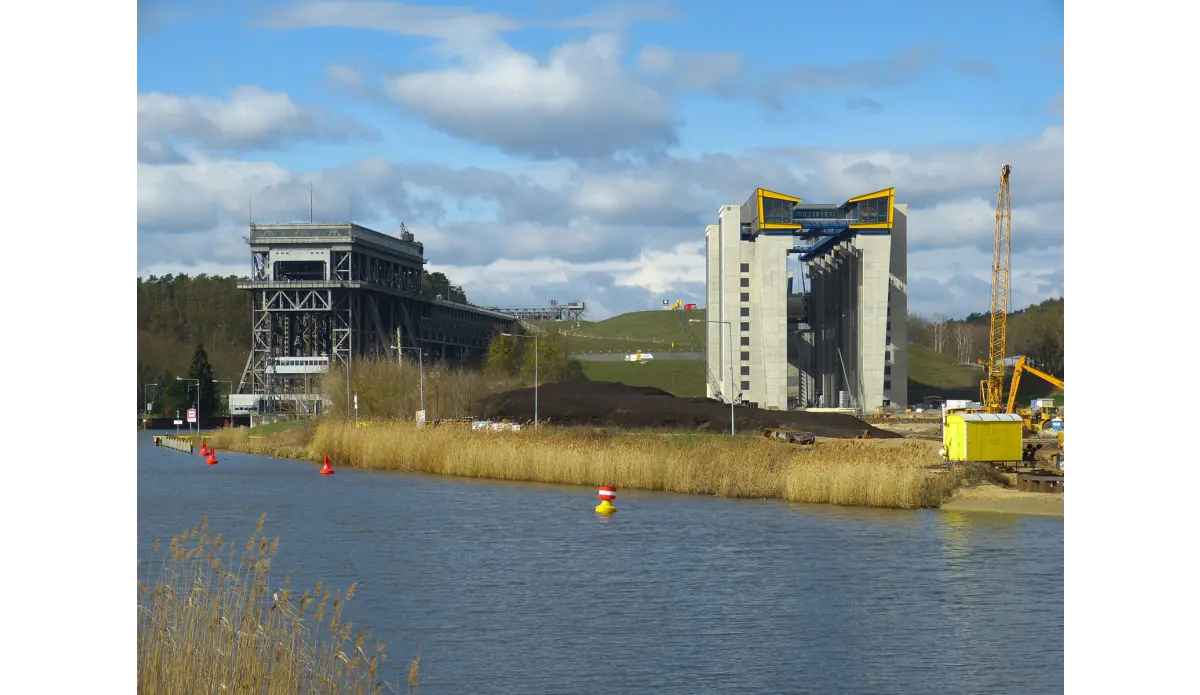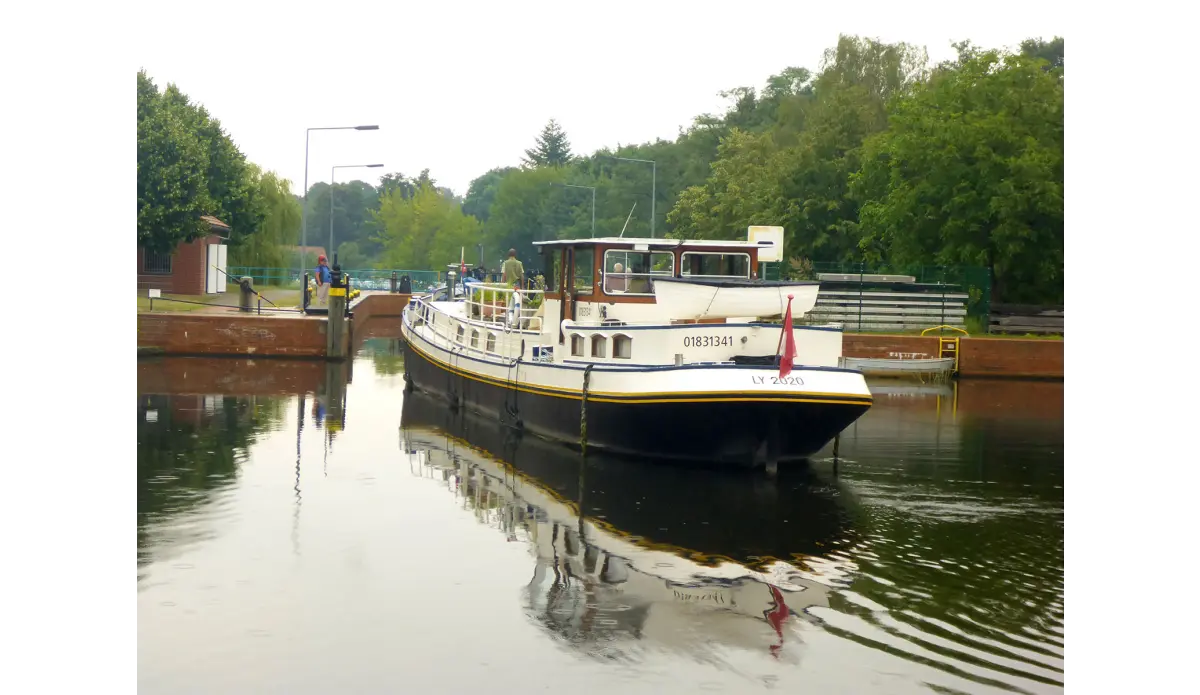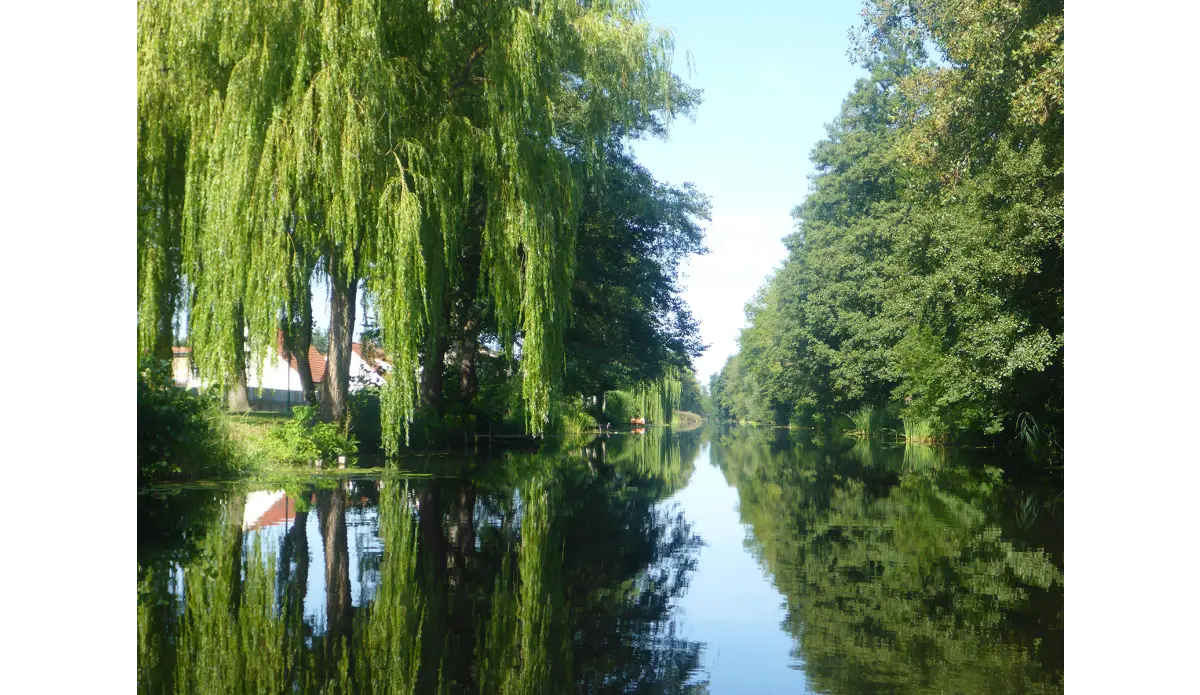- Details
The old Finow Canal in Germany
Since the canal was completed in 1620, the region around the Finow Canal has suffered from numerous political conflicts. The canal’s construction was followed by war. Hordes of soldiers marched across the region time and again, leaving behind a scene of destruction. What remained fell victim to decades of neglect and industrial pollution during the long period of communist dictatorship.
The Finow Canal. Our old canal
You couldn’t exactly call it lovely, our Finow Canal. Its banks aren’t lined with castles and palaces, and you’d be hard pressed to find a friendly café or an inviting restaurant. And little remains of the vineyards cultivated by the monks of Chorin Abbey.

With a Linssen motor yacht in the Niederfinow boat lift
If you, as a visitor on a charter motor yacht, are in a hurry, follow the parallel Oder-Havel Canal and you’ll reach the boat lifts in Niederfinow or the locks in Hohensaaten in a few hours from the Havel.
Or maybe you’d like to take two or three days to complete your Linssen boat trip on a unique historic waterway, whose four-hundredth anniversary we’re celebrating this year. Maybe you’d be fascinated to see relics from the pioneering period of German industrialisation on the fringes of your journey, to hear their story and to get to know the people along its banks? Maybe you and your crew would find it exciting to experience the twelve historic and still manually operated locks dating from the 1870s? And maybe you don’t know many waterways that combine an experience of nature and engineering history in such a diverse way as our Finow Canal?
After entering the part of the Finow Canal near Liebenwalde known as the “Langer Trödel” (long tow), you first pass your Linssen yacht through a recently restored section of the canal, past the three-kilometre-long ribbon village of Zerpenschleuse, and, after passing the lock there, you cross the Oder-Havel Canal. After a few kilometres you reach Ruhlsdorf lock. Here, another section of the Werbellin Canal, also recently renovated, allows you to make a detour to Lake Werbellin, which attracts visitors with excursions to the Schorfheide-Chorin biosphere reserve and on the bottom of which the wrecks of eleven brick barges are still a sought-after destination for divers from near and far. However, if you continue on the Finow Canal, through the locks at Ruhlsdorf, Leesenbrück and Grafenbrück, you will soon see, on the starboard side, the mouth of the Finow, a small river which gave the canal and the region their name. Soon the jetties of the Eisvogel Marina or the Finowfurt rest stop will provide you with somewhere to chill out or prepare for the next day’s journey.


Steamboats an historic brick barges
You then continue through Schöpfurth lock, after which a testimony to German industrial history awaits you. Dock in the Messingwerkhafen and visit the Messingwerksiedlung (the harbour and settlement belonging to the now closed brassworks), the over 100-year-old water tower by Paul Mebes or the eight copper-clad houses dating from 1931/32, the youngest and smallest of which, known as “Sans Souci”, was designed by the famous Bauhaus architect Walter Gropius. You are welcome to ask for the assistance of the volunteer “Finow Canal pilots”, who will be happy to accompany you for part of your journey, if time permits.
Your journey then leads past other relics dating from the time of industrialisation to Eberswalde, where you can supplement your supplies with fresh regional produce at the market held on Tuesdays and Fridays each week. Take a guided tour and learn about the history of Eberswalde. During the last days of the Second World War, the town, which had until then been unharmed, was reduced to rubble after being bombed by the German Luftwaffe.
The Finow Canal now descends towards the valley of the Oder. After the peaceful journey through the unspoilt countryside of the Finow Valley, on whose southern slopes near the village of Niederfinow the monks of the nearby monastery once cultivated their wine, the old and new boat lifts soon rise before you. This is where the Oder-Havel and Finow Canal meet and together they head towards the Oder in the old bed of the historic Finow Canal.
You may encounter a convoy of steamboats or the historic brick barge CONCORDIA on your journey if your trip takes place in the week around 21 May, as we will be holding a series of events then to celebrate the four-hundredth anniversary of our canal.
If you found our canal lovely even without castles and palaces, I will not contradict you.

